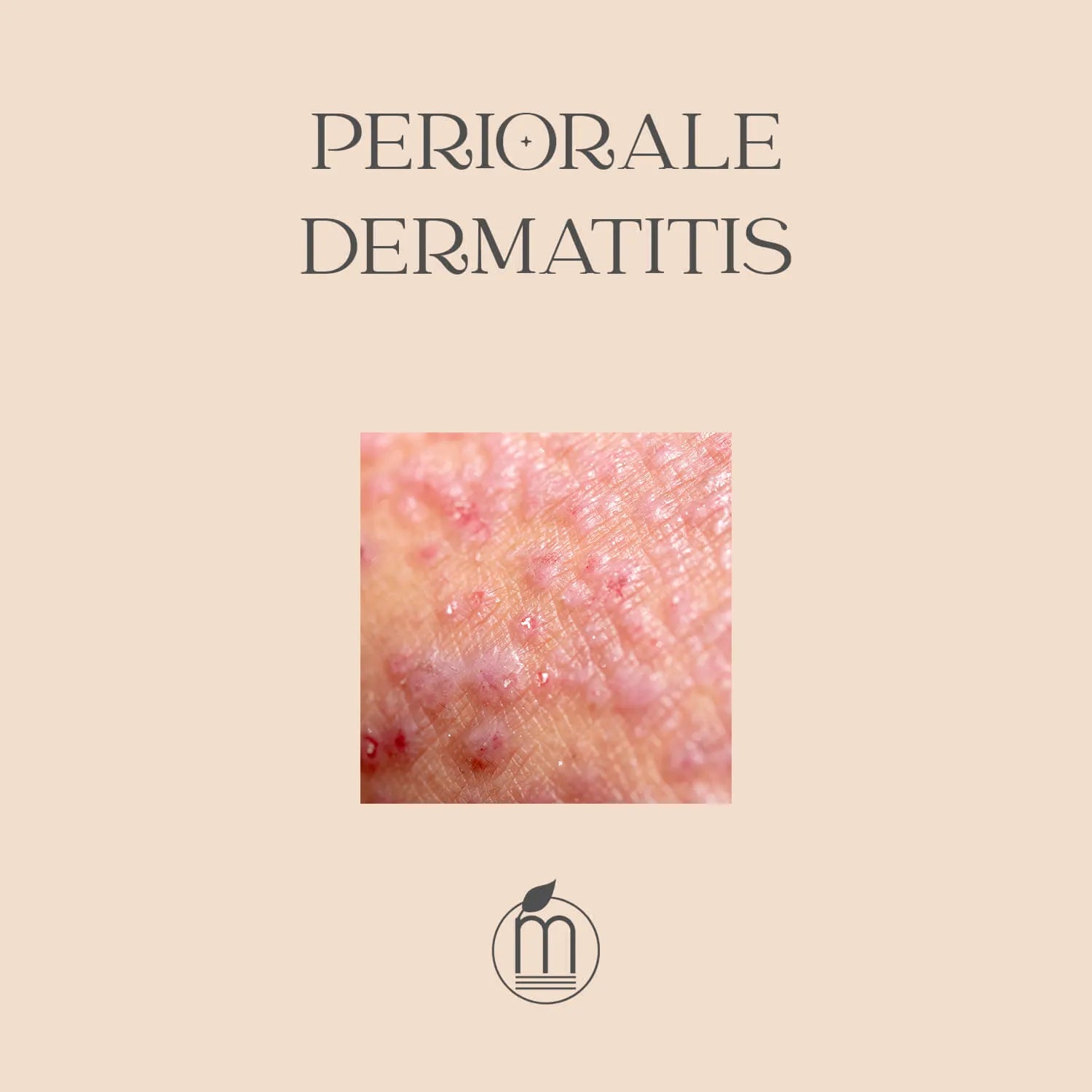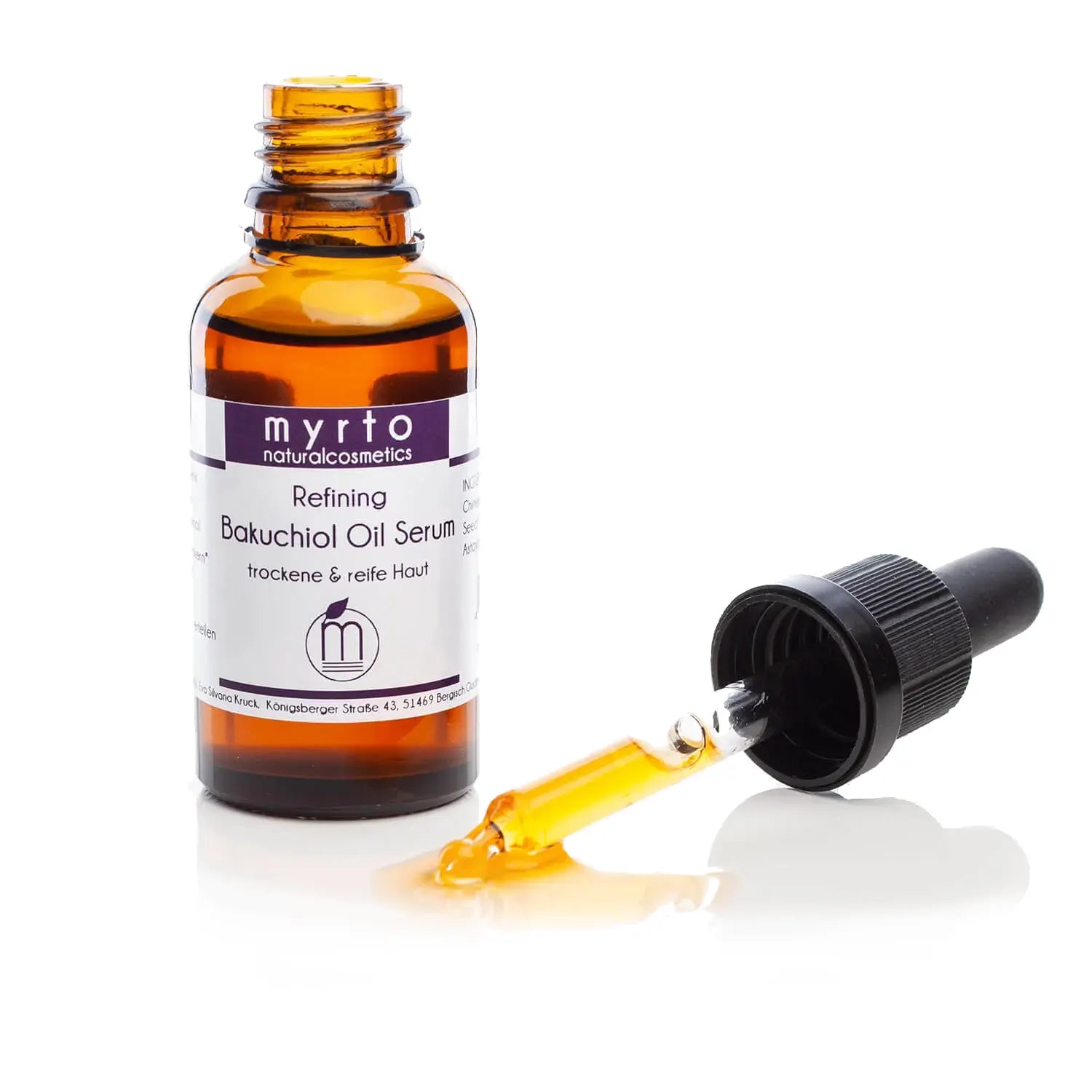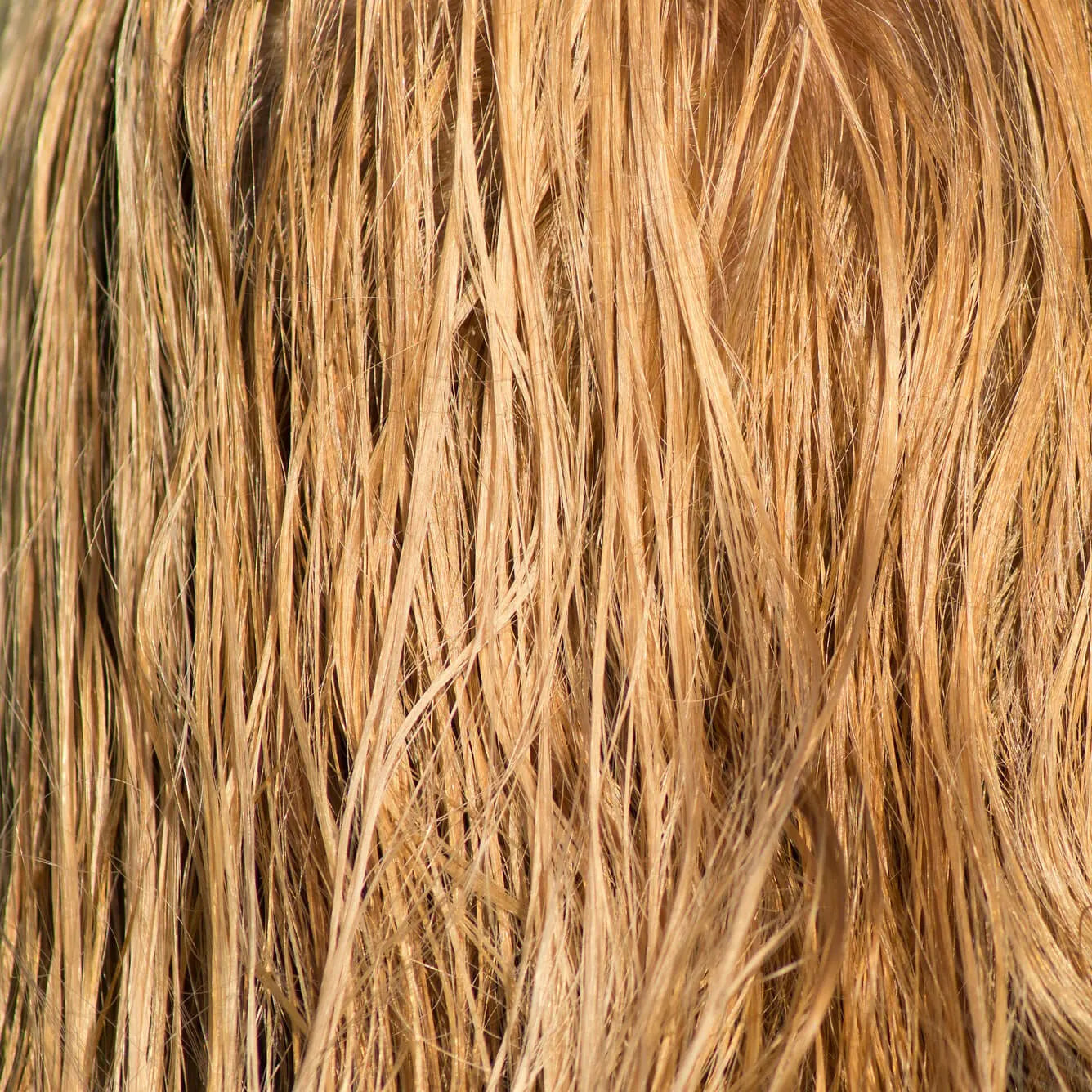
What helps against perioral dermatitis?
What is perioral dermatitis?
If you suffer from redness, flaky and irritated skin around your mouth and chin, your skin itches, burns or small inflammatory nodules form, you may have perioral dermatitis (POD). "Perioral" comes from Latin and means "around the mouth". The symptoms of this rash are often similar to rosacea, neurodermatitis or acne. In this article, you will learn how to recognize perioral dermatitis, what the possible causes are, how to best treat perioral dermatitis yourself and how to get rid of it permanently.
How do you recognize perioral dermatitis?
Perioral dermatitis, also known as stewardess disease, most commonly affects young women up to the age of 45. Men and children are rarely affected. The red rash around the mouth is often accompanied by small purulent blisters, pimples, papules or pustules. The unpleasant feeling of tension with burning and itching can also occur in the eye area (periocular), around the nostrils (perinasal) or on the forehead in an advanced stage. A fine border around the lips is typically not affected by the rash.
You can usually recognize perioral dermatitis by the typical symptoms described. It is important to differentiate it from other skin diseases such as rosacea, acne or neurodermatitis. Rosacea is usually more extensive than perioral dermatitis and not just local. Unlike acne, no blackheads appear. If you are unsure, it is best to consult a dermatologist for an exact diagnosis.
What are the causes of perioral dermatitis?
The exact causes of perioral dermatitis are not yet clearly understood. The following factors play a role:
Over-cared skin
Over-cared skin occurs when you use too many, and especially unsuitable, skin care products and make-up. Your skin is fighting back against the "too much" that overwhelms it. This is not an allergy to individual ingredients, but simply a temporary hypersensitivity to any skin care product in general.
additives in cosmetics
There are thousands of cosmetic ingredients that are designed to optimize the application or effect of a product, extend its shelf life or improve the scent of a cosmetic. Most additives are not only unnecessary for sensitive facial skin, but are even harmful. Fragrances can irritate the skin, alcohol, aggressive surfactants and emulsifiers attack the protective skin barrier, causing the skin to dry out more and more. When using cosmetics that contain mineral oil, the stratum corneum swells even more. Bacteria collect on the surface of the skin, worsen the irritation and cause purulent pimples. Due to the defective skin barrier, the bacteria can no longer be fought off.
Other possible triggers of perioral dermatitis
Possible triggers for perioral dermatitis can also be cortisone-containing preparations (corticosteroids), which are often used by dermatologists to treat the symptoms of the skin disease. A disturbed intestinal flora can also be the cause of perioral dermatitis, because skin problems and intestinal flora are largely related. Another possible cause is the hormonal imbalance that occurs when taking the pill and also after stopping it. Depending on the individual disposition, stress can also be a possible trigger or make the symptoms worse. Last but not least, frequently wearing medical face masks worsens the skin disease.
How to get rid of perioral dermatitis: The skin care zero therapy
The reddish, purulent bumps of perioral dermatitis are not contagious, they are harmless and not chronic - but they are an annoying cosmetic problem if you are affected yourself. Your self-confidence will also be put to the test and will have to suffer. It is best to be open about your skin problem and tell your friends and colleagues about it. Hiding the symptoms or retreating into solitude would only cause you additional stress and would not improve your well-being. In any case, you need a lot of patience and self-discipline to bring your skin back into balance.
During this time, you should consistently wash your face only with water, dab it gently with a clean towel, do not rub it, and keep it free of any moisturizer, oily care products and make-up.
In the first two weeks, the condition may worsen. The skin itches, feels tight and flakes particularly badly during this unpleasant phase, while the swollen horny layer dries out and the bacteria that cause pimples are deprived of their breeding ground.
When the initial symptoms subside, your skin gradually regenerates. After about 6 weeks, the face is usually completely healed without scarring, although in some cases healing can take longer, up to several months.
What helps over-cared skin heal
- Compresses with green or black tea, preferably organic: The high tannin content, which green tea in particular has, has an astringent effect. The tannins reduce the unpleasant feeling of tension, pulling, burning and redness of the skin. Let the tea bag steep in hot water for at least 10 minutes and then place it on the affected areas of skin for around 10 - 15 minutes once it has cooled down.
- Healing clay mask: You can also apply pure healing clay as a mask about once a week. Mix it with cold water and leave it on your face for about 15 - 30 minutes. Then rinse the mask off with lukewarm water.
- Anti-inflammatory diet: Make sure you eat as wholesome a diet as possible, with plenty of seasonal, local, organically grown fruit and vegetables. Try to avoid ready meals with all the additives and instead cook fresh food yourself. You should avoid coffee, black tea and spicy foods during your zero therapy, as well as alcohol and smoking.
What harms over-cared skin
- Peelings, mechanical or chemical: They are not suitable for sensitive skin, they increase redness and weaken the skin barrier.
- Sunbathing: UV radiation means additional stress and worsens the symptoms.
- Experiment with new products: Stick to the zero skin care diet, don't try any supposed new miracle cures and give your skin the time it needs to heal in peace - even if it's very difficult.
Switching to a minimalist skincare routine
Only after the affected areas have completely healed should you carefully introduce your skin to a minimalist care routine for sensitive skin. When changing your care routine, we recommend that you do not use several new products at the same time, but rather test one product at a time over several days. Give your skin enough time, as it takes around 28 days for the skin cells to regenerate.
Choose care products without unnecessary additives and with just a few ingredients that rebuild your skin barrier. Less is definitely more here! All myrto products are ideal for sensitive and highly sensitive skin because they are free from additives such as fragrances and preservatives, alcohol and emulsifiers. The minimalist formulations with skin-like ingredients ensure optimized tolerability, so that you can enjoy long-term, healthy, balanced skin.
For the first time, after the perioral dermatitis has subsided, instead of richer face creams and masks, prefer light facial serums with a lower oil content based on aloe vera with soothing active ingredients, adapted to your skin type.




